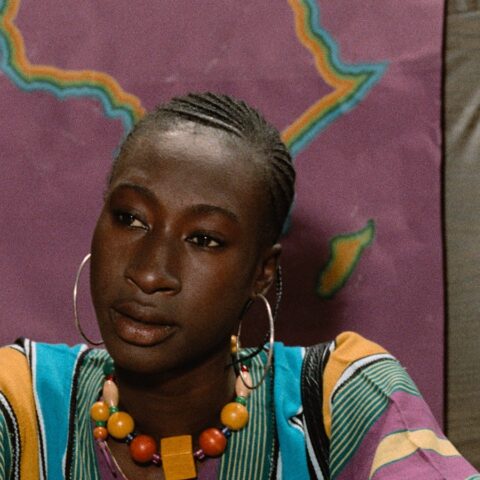THE GLOBAL LANGUAGE OF YOUTH CULTURE
By Lawna Elayn Tapper
Wednesday, May 06, 2009.
I sat and listened to the passion with which a local teacher spoke about improvements in the singing ability of older girls in her primary school: ‘I’ve been teaching for 16 years and there have always been events where children have the opportunity to sing, and so forth.
But, my goodness, at this year’s Red Nose Day Cabaret, some of our girls – their voices were absolutely astonishing! I couldn’t believe these 9, 10 and 11 year olds sounded like Beyonce and Alexandra – I’m talking real talent! I mean, there’s normally one really good singer, but this seemed almost general.’
When she showed me video footage of the event, I too was in awe. And it wasn’t just their voices: I was also struck by the star quality of their presentation – the deliberate quivering of the voice, the gyrations of the neck, the rhythmic gesticulations of the hand movements – Simon Cowell would have been well impressed! That this aspiration for stardom has become a significant feature of youth culture is quite clear.
A generation ago, it would have seemed ridiculous to be including 9, 10 and 11 year olds in discussions about youth culture. So what’s happened? Maybe it’s that advancements in technology have shrunk our planet from a world into a global community. And no one can deny how well-wired and interconnected youth and technology are: MSN, Bebo, You Tube, Facebook, Myspace, MTV Base, UK Swagger, game consoles… an endless list.
So, should we be so surprised that the age of those included in discussions about youth culture has dropped? Let’s think about it. Whoever is able to access, and choose to enjoy, the tools that members of a particular culture use to interact, will assume the given identity and become part of that culture.
Combined, the World Wide Web and television bring with them youthful delights, to date unmatched. They carry so much that appeals to and caters for the young: get-rich-and-famous-quick-with-or-without-real-talent reality TV shows; special tutoring from channels that provide the models who tutor our young in the correct demeanour, style and accessories; the world’s greatest social networking site, Facebook, allowing our youth to create illusions of their real selves; or game consoles used to create characters that they make engage in whatever lawlessness they choose – throwing people out of cars or crazy police chases.
The age restrictions on who can engage in any of the above are so tenuous that they amount to being non-existent. A culture that a generation ago was only courting teenagers, now exposes our younger children, and their lack of restrictions invites them to participate. It’s no wonder our youth are getting younger!
In an age where celebrity status seems more possible than it ever has before, our youth seem smitten. Entertainment, in general, appeals, but the music industry has a particular ring to it. And there are those who have long known the significance of music to youth culture.
In a book called It’s Not Only Rock n Roll, Professors Donald Robert and Peter Christenson highlight a poignant reminder that many may wish to deny: ‘most human learning is incidental in nature and takes place outside of designated educational settings.’
After a 3-year-long research project they concluded: ‘music matters to adolescents, and they cannot be understood without a serious consideration of how it fits into their lives…Music alters and intensifies theirs moods, furnishes much of their slang, dominates their conversations and provides the ambiance at their social gatherings. Music styles define the crowds and cliques they run in. Music personalities provide models for how they act and dress.’
There was a time when the gift of a voice, or magic fingers to play an instrument, kept becoming a musician exclusive. However, the arrival of Hip-Hop in the 70s changed all that. It did heaps to prepare the ground for what we now see as the present day craving for celebrity. No longer did you need a voice as soft as silk, or as raspy as a sultry evening. You didn’t even need to be able to hit keys like a virtuoso.
To rap, you only needed a lyrical tongue and the gift to rhyme about urban lifestyles and realities. This style of music making was fresh, cool and funky – just right for anyone young, and the young were on it! It was raw, intense, passionate, but hard – just like life.
But like anything else, hip hop evolved, and it wasn’t just the youth and concerned elders that looked on, the biggest corporations did too. As its audience grew, and the stars began to collaborate with artists from genres outside of hip hop, the possibilities began to become obvious; corporate eyes widened and their tongues hung. But they didn’t pounce until the time was right.
In 1986, hip hop veterans Run DMC performed their song ‘My Adidas’, merely paying tribute to their preferred make of footwear: ‘…and I walk down the street, and I rock to the beat, with Lee jeans on my legs and Adidas on my feet.’ The sportswear company was inspired by the masses waving their Adidas in the air. This led to a $1 million dollar sponsorship contract. A new phenomenon was born – Product Placement.
This was just the beginning but it became the gateway to an advertiser’s paradise. And these corporations spend all this money because they make much, much more than the artists themselves – it’s a very lucrative investment!
Corporations began to pay entertainers or production companies astronomical sums of money for opportunities to influence the artist’s audience. Name branded products would subtly appear in music videos and films, in turn impressing and influencing the purchasing habits and behaviour of their audiences.
Oh, so that’s why everyone knows when to wear Armani glasses, drink Hennessy, step in a pair of Nikes and drive a Cadillac: because their idols do. It pumped money into hip hop – money that created wealth and changed its theme.
Suddenly the issues common in the 1970s and 1980s began to sound irrelevant. With the 1990s, more artists began reaping the benefits of the genre’s profits and rapping verses about rags to riches. And it has seeped into other forms – R&B, Grime, Funky House, UK Rap, and its love affair with materialism and consumerism has continued and buttressed a culture of young people who want fame and the ability to buy whatever they want. And while the young have bopped on, it’s not just their sense of style that has been shaped, but also their mindset and their mode of expression.
It’s perhaps thanks to the music and entertainment industries and their links with corporations, that our youth have become more ambitious than us, their predecessors. The down side, however, is that their determination is gilded with an attitude that is ruthless, illusory, impatient and materialistic.
In 50 Cent’s video, ‘P-I-M-P,’ the men strut about looking sharp, and the girls parade, looking sexy, Ashe brags about how easily he’s ‘made it’: ‘whoever said progress was a slow process wasn’t talking about me…’ Likewise, in ‘Single Ladies’ our young people watch Beyonce gyrating in high heels, wearing what looks like a leotard that displays bulging breasts, as she pushes her middle up and down, and slaps her own bottom sensuously – we’d better believe our young people are taking it all in. The corporations do, which is why they invest so heavily.
But there’s so much that our young people are not told. From their point of view, it’s all about the ‘swagger’ factor; girls wear mounds of weave, are shackled in bling and even 12 year olds make efforts to plaster their young faces in make-up and flaunt their cleavage. The boys want to move about in packs like dogs, running from police and, if caught, try to survive their time locked up in ‘pen’ – hooded by their illusion about the love and importance of money, and weighed down by the ‘drop’ in their sagging trousers. Is this evidence of what the researching professors concluded?
As they watch our young emulate their idols, will the industry ever share the truth of how you’re perceived when you dress like the real stars, but you’re not one? As artists watch their fans get stuck at the point of mimicry we need discussions about the consequences of looking a particular way, about how you’re perceived – no one wants your autograph, only your fingerprints! Might the disproportionate amounts of chatter about being a street hustler and surviving jail be making the experience of prison seem acceptable and normal, as dangerous street jugglings are often presented as a passport to ‘success’?
Who’ll try to shake them out of their confusion and tell our young men to stop unconsciously wanting a taste of prison to boost their street cred if they survive it – tell them they won’t come out super star heroes, just a statistic who finds it harder to work his way through the web of judgements and misconceptions that he’s tied himself up in? And to our girls – which diva will announce that that their determined young cleavages makes nobody ‘love you,’ only want to ‘have you’ until their ready to ‘dash you’?
A well-known turn of phrase, and indeed an admonition, in the hip hop world is ‘keep it real’! And, because of its extensive appeal, hip hop is said by some to be the global language of youth culture. If this is true, I urge its leaders, and their corporate partners, to do just that – ‘keep it real’! Let’s remember the words of Public Enemy back in the 80s: ‘Don’t, don’t, don’t, don’t – don’t believe the hype…I like Nike, but wait a minute, the neighbourhood supports so put some money in it.’
To our youth, I’ll remind them of the need to have more belief in themselves, to more readily question what they’re engaged in, and to have less trust in their idols and the wheels that make them turn.
Lawna Elayn Tapper is with Rice’n’Peas Magazine where this piece first appeared.
�
Send to a friend | �
View/Hide Comments (0) | �



